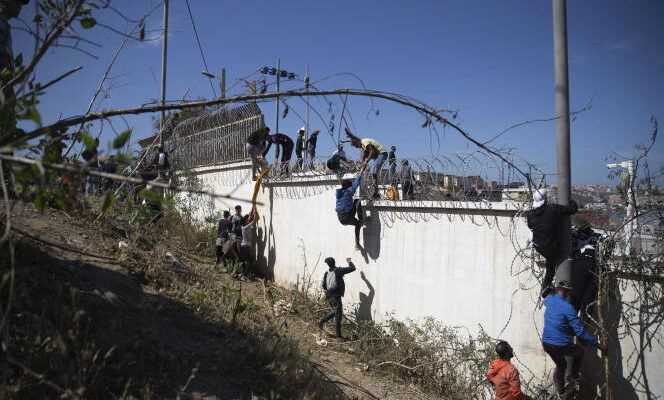Calm has returned to the border between Morocco and Ceuta. The Moroccan auxiliary forces have resumed their post on the outskirts of the long wall of sharp barbed wire that separates Africa from Europe. On the edge of the Spanish enclave, the young inhabitants of the nearby Moroccan town, Fnideq, have set out to stare at the coasts of this closely guarded end of Europe, laden with frustration. “But Ceuta is not really Europe. There is still some time, we went there and came as we go to a neighboring town “, recalls activist Chaimae Amachou, based in Fnideq, while the borders have been closed since March 2020 due to Covid-19.
Strange remnants of colonial history, Ceuta like its neighbor Melilla, further east, live landlocked in Moroccan territory, straddling the Mediterranean, in Europe without really being so. Their borders were severely tested the week of May 17. Between 8,000 and 9,000 Moroccans and a few dozen sub-Saharan migrants took advantage of the passivity of controls on the Moroccan side, against the backdrop of the diplomatic crisis between Rabat and Madrid, to enter illegally, before being expelled by the Spanish authorities. “All they wanted was to be able to access this city on which our local economy depends. Some just wanted to visit their family ”, assures Chaimae Amachou. “These people are not migrants. Once they arrive, they are systematically sent back to Morocco and that everyone knows ”, specifies the sociologist specializing in migrations Mehdi Alioua.
Since 1992, agreements signed by Rabat and Madrid have made it possible to expel Moroccans who have entered illegally and, to a certain extent, sub-Saharan migrants, without any procedure or delay, except in the case of minors. In 1993, a first barrier was erected on the border with Ceuta. “It is the first wall built after the fall of the Berlin Wall and it is very symbolic of European policy on migratory flows, analysis Virginie Guiraudon, research director at CNRS and professor at Sciences Po. After its admission to the European Economic Community, Spain wanted to play the good pupil of Europe and show that it would watch its borders. “
“A geographic rent”
Applied from the 2000s, these agreements, much criticized by NGOs, have strongly discouraged illegal crossings. Faced with European pressures, accompanied by funding to help the kingdom strengthen the tightness of its borders, Rabat has long oscillated between periods of repression and relaxation, the last of which is linked to the reception of the Polisario leader by Madrid, experienced as a betrayal by the Moroccan authorities. “This is the issue of the externalization of migratory flows: the more important the migratory issue, the more it gives a geographical rent to Morocco and therefore power in the negotiations. When Morocco is not happy, as is currently the case, it plays this card “, adds the specialist in immigration to Europe.
You have 49.81% of this article to read. The rest is for subscribers only.
